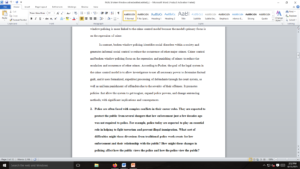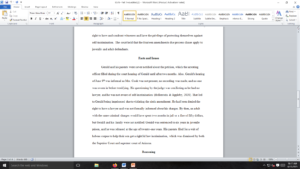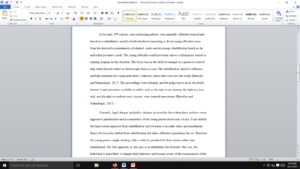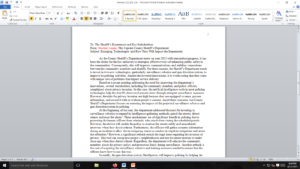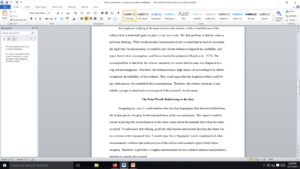Juvenile Delinquency
instructions attached below
Requirements: 4 pages
Research Paper: How Various Factors Affect Juvenile Delinquency Assignment Instructions
Overview
In this assignment, you will apply the Learn material in a meaningful way to clarify your understanding of various factors which impact delinquency. Examples of various factors influencing juvenile delinquency include social risk factors such as individual, family, school, peer, and community factors. Physical factors like age, gender, and race are further characteristics which could have influence on delinquency. Additionally, social class, gang affiliations, and drugs can affect how juveniles may be further influenced into problematic behaviors. As is evident, there are many factors noted in the readings that can factor into a child resulting in delinquent behaviors. The purpose of this assignment will give you the opportunity to apply the Learn material in a meaningful essay application.
Instructions
Your essay discusses the relationships among the family, the educational system, drugs, and delinquency. Additionally, how does geography, race and social class combine to affect delinquency:
- The length of your assignment is four pages.
o This assignment required a title page, abstract, reference section, all of which are not included in the page count.
- Your essay format is APA
- See the assignment rubric for further details of assignment including reference requirements.
- Peer-reviewed scholarly resources (should be within five years when possible).
- Assignment must be submitted as a Word document.
Note: Your assignment will be checked for originality via the Turnitin plagiarism tool.
Answer preview
Geography, race, and social class directly influence delinquency through social disorganization, promoting major risk factors for deviant behaviors. Some communities and cities cannot promote positive values and enhance social control (Changalasetty et al., 2019). Structural factors in the community create a social disadvantage to some members. For instance, African Americans and Latinos are most likely to occupy the zones of transitions that are characterized by poverty rapid population growth, among others (Binik et al., 2019). These conditions can also influence family dysfunction. Social disadvantage is a major factor in juvenile delinquency in the United States. Fragmentation in the community between people in different social class influence scanty solidarity and reduces interaction and cohesion. Children living in a community marked with ethnic heterogeneity are at high risks of delinquency due to a lack of social integration. The rapid increase in population in some regions and among various social groups heightens poverty, housing challenges, and the state of homelessness linked to delinquent behaviors. Hence geography, race, and social class influence delinquency through social disorganization.
[1383 Words]

Juvenile Delinquency




